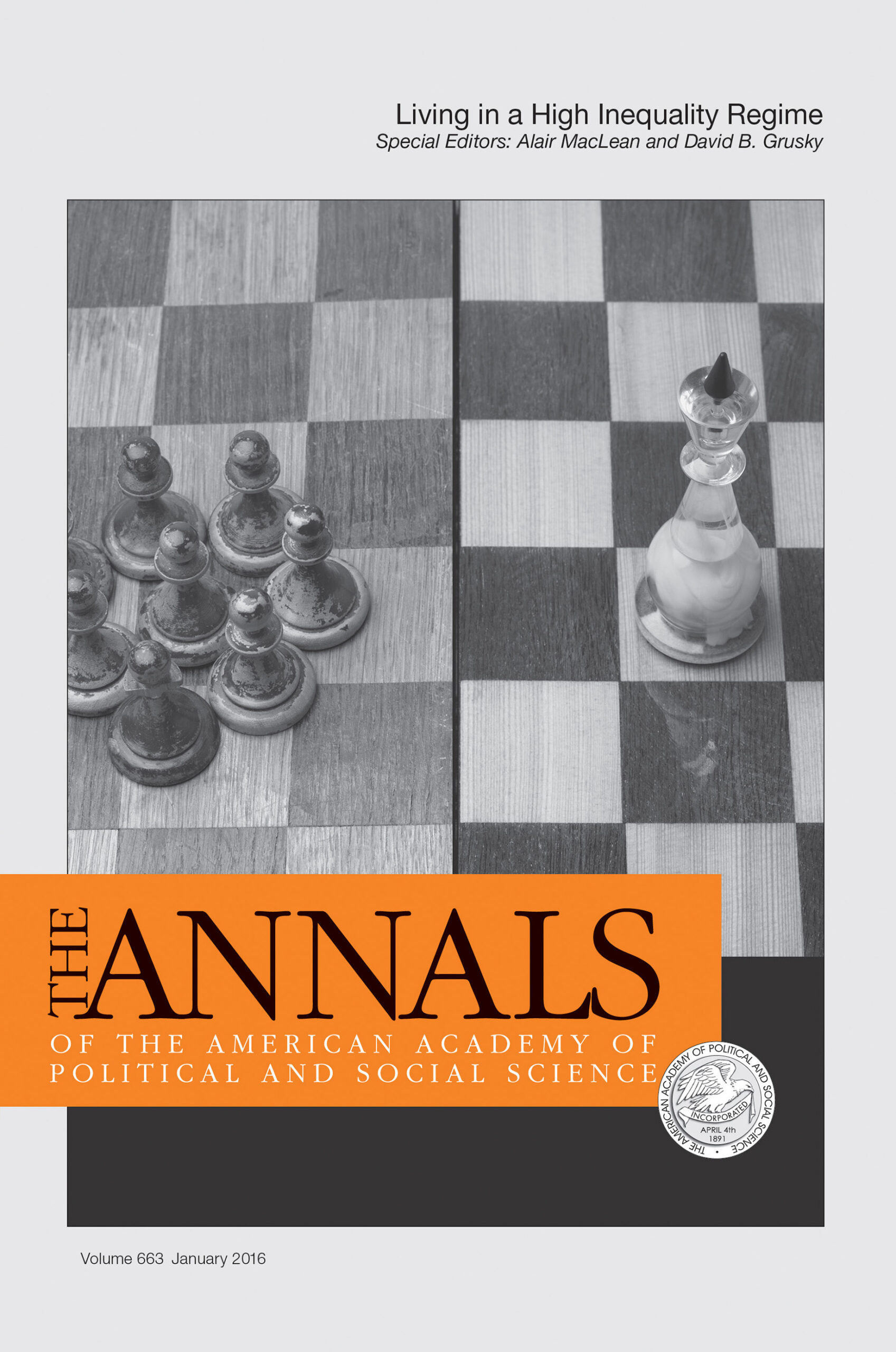Economic inequality in America is significant and has increased astonishingly since the 1970s—these facts are well documented. Less understood, however, is whether rising inequality matters to how we live our everyday lives: Does rising inequality mean less opportunity for the broad sweep of Americans? How (if at all) does it affect social relationships? How does it affect our health and even the way we die? This volume sketches the “social fallout” of rising income inequality across various domains and provides preliminary evidence on the scope of that fallout.
While racial, ethnic, and gender gaps in earnings have declined over the last 40 years (albeit unevenly and in some cases slowly), economic inequality among different occupations is on the rise: between-occupation inequality has increased—in some cases markedly—since the 1970s, deepening the economic divide between high status professionals and earners in the general workforce. Further, there has been a sharp increase in the extent to which members in particular economic classes tend to marry within the same class, a result that tracks trends in income inequality almost precisely. There is likewise tentative evidence of a decline in social mobility (measured as the extent to which children end up in the same social class as their parents). Researchers do not have enough data to measure trends in social mobility reliably, but the data that are available show that people at the very top of the class structure are increasingly able to pass their class position on to their children.
This volume also presents evidence that states with high levels of inequality have larger prison populations. And there is evidence that suggests that there is sustained and even increasing political polarization by class. Although class effects are smaller than cultural effects, class-based differences persist. We also die in ways that depend in part on our class and status. Class-based variability in quality of death has not yet grown as substantially as might have been imagined, but the poor are less likely to have advanced care directives and are more likely to experience moderate to high levels of pain in dying.
So how do all these gaps in all these facets of life affect us? The effects of income on happiness are increasing. The sources of this rising effect are unclear, but the affluent were about as happy in 2012 as they were in the 1970s, and the poor were much less happy. Consequently, the gross happiness gap by income was about 30 percent bigger in 2012 than it was in the 1970s. The evidence here suggests then that rising economic inequality is socially consequential.
In their lead chapter, special editors Grusky and MacLean suggest that rising economic inequality is, on its face, alarming enough, but that rising commodification may be the under-appreciated force that gives inequality “teeth” in terms of its social impact. Rising commodification means that the range of goods, services, and even opportunities available to Americans are increasingly for sale and cannot be acquired without putting money on the table. Better health can be purchased, a longer life can be purchased, and opportunities for one’s children can also be purchased. Likewise, access to neighborhood amenities is increasingly purchased. In a commodified world, money increasingly determines access to a “good life,” and hence money matters increasingly. If we are indeed moving into such a world, then rising income inequality is all the more consequential and alarming.

